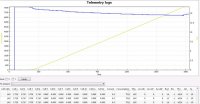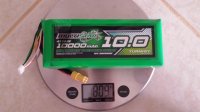Old Man
Active Member
I only have a couple questions with the mAH/gm thing. One can obtain advertised weights and battery capacities off the internet or a battery labe. Has anyone performed actual measurements to verify the claimed ratings? We are living in a world where advertising statements have been known to be bit over stated, yes?




